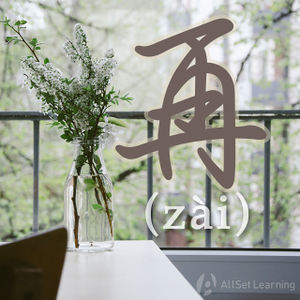Difference between revisions of "Expressing "in addition" with "zaishuo""
| Line 23: | Line 23: | ||
==See also== | ==See also== | ||
| − | *[["In | + | *[["In addition" as "lingwai"]] |
| − | *[[Expressing " | + | *[[Expressing "in addition" with "haiyou"]] |
| − | *[[Expressing " | + | *[[Expressing "not only… but also"]] |
== Sources and further reading == | == Sources and further reading == | ||
Revision as of 01:45, 22 July 2013
-
Level
-
Similar to
-
Used for
-
Keywords
"再说..." (zàishuō...) is used in a similar way as "In addition" or "Moreover", in that it is adding on additional information or reasons to the topic at hand.
Structure
Just add 再说 to the beginning of the second clause of your sentence. Remember that both statements should be related to each other!
Clause 1 , 再说 + Clause 2
Examples
- 我 的 家人 想 去 美国 旅行,再说 我们 还 可以 看望 我们 的 亲戚。My family wants to go to America to travel。 In addition, we could also visit my relatives.
- 现在 太 早 了,我 不 想 去,再说 那 个 商店 还 没 开门。It's too early now, I don't want to go. The store hasn't opened yet, anyway.
- 我 不想 帮助 他,因为 他 经常 说谎,再说 我 也 没 钱。I don't want to help him. He lies a lot. Furthermore, I don't have any money.
See also
Sources and further reading
Books
- Common Chinese Patterns 330 (汉语常用格式330例) (pp. 297)→buy
- Integrated Chinese: Level 1, Part 2 (3rd ed) (pp. 154-5) →buy
- Integrated Chinese: Level 2, Part 1 (pp. 17-8) →buy
- Modern Mandarin Chinese Grammar: A Practical Guide (pp. 252) →buy



